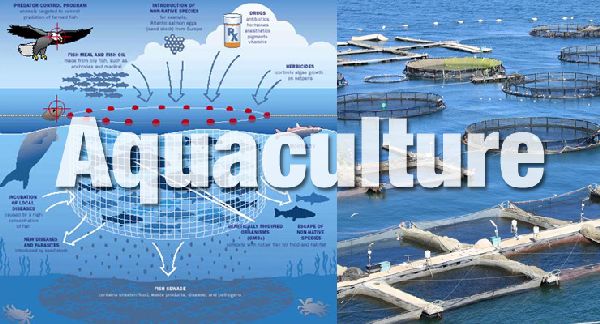Aquaculture:
The Solution or Problem?

With an ever growing global population, the debate on whether aquaculture is a viable food supply solution. Aquaculture has been around from centuries, beginning in China where local farmers fed and raised carp that were left stranded in artificial lakes after floodwaters receded. Since ancient times, as humanity began to set up permanent living spaces, farming on land and in water have been necessary for survival.
Today, aquaculture refers to the cultivation of food sources in water. This includes everything from plant life such as algae and aquatic plants to fish, shellfish and other marine life. Seems like a great solution to wild fish farming and providing the world with necessary seafood. Aquaculture is used all over the world from Chine to the United States, across Europe and down to Australia.
Aquaculture can be done in saltwater or freshwater. In the United States, fresh water farming provides catfish while marine production is more focused on shellfish such as oysters and clams. Aquaculture provides the world with over 30% of the total supply of fish. In the US, about 70% of all seafood is imported and of that 70%, forty percent is farmed. The impact aquaculture has had on the food supply is massive and widespread, making seafood readily available for many families.
There is an environmental cost to aquaculture. Because fish are kept in cages on farms, public water quality can be seriously affected by the organic waste. This includes fecal matter, uneaten/rotten food, chemicals used as pesticides, herbicides and antibiotics. Also, because the fish live in such close quarters, the likelihood of breeding disease is not only much higher but can affect a greater portion of the population.
Fish farms are also reliant on wild fish for food supply. Carnivorous fish such as salmon, tuna and grouper require a high-protein diet. Herring is the most commonly used fish food which has led to an over farming of the species in order to provide food for the ever increasing farms. Part of the problem is inadequate regulations and policies over the aquaculture industry.
In the US, there are many state laws, federal statures and even executive orders that try to police the environmental effects aquaculture has, but the coverage is spotty at best. Most regulations were designed to cover specific aspects of environmental issues of aquaculture instead of a more thorough and blanketed approach.
Regardless of which side of the argument you stand, it is critical to the global population to have viable, healthy fish sources. Once federal and international law can catch up and provide regulations to protect the environment, aquaculture will be able to flourish as it was intended.
Island Creek Oysters – Website
Island Creek Oyster Company
by LA DiNardi




Follow Us!